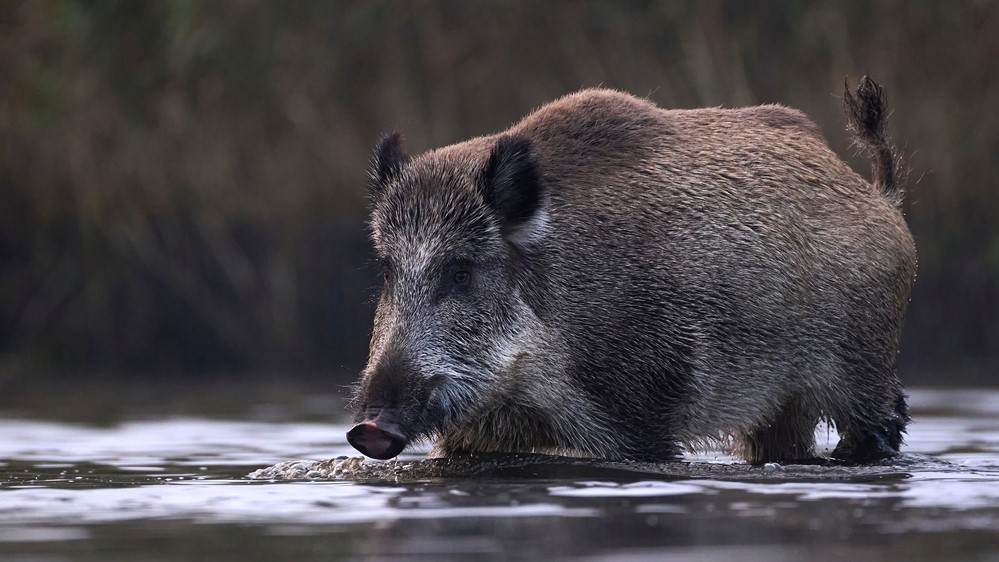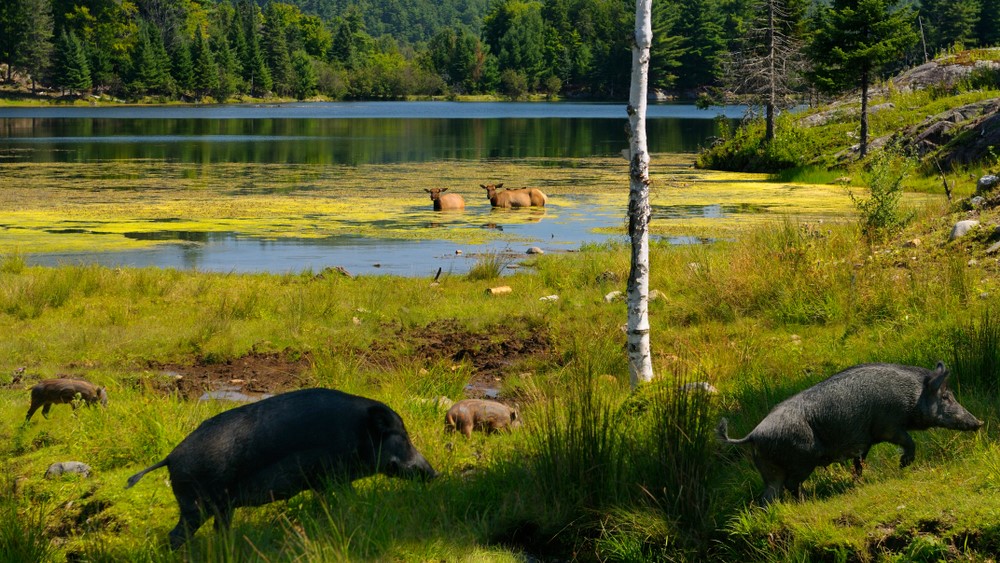
Feral "super pigs" in Canada could soon trample across the border and invade the northern U.S., a new study finds.
The feral pigs are a mixed population of domestic swine (Sus scrofa domesticus), wild boar (Sus scrofa) — which were introduced to Canada in the late 1980s for meat and recreational shooting — and hybrids of the two, according to the Canadian Council on Invasive Species. Keepers released the boars and some pigs when the market for boar meat plunged in the early 2000s, thinking that the animals wouldn't survive the harsh Canadian prairie winter and deep snow, according to the new study. But instead, the pigs thrived.
"These pigs have high reproductive rates, are very mobile, and have a high capacity to spread," study co-author Ryan Brook, a professor of animal and poultry science at the University of Saskatchewan in Canada, told the hunting and fishing magazine Field & Stream. As it turns out, the pigs are also resistant to the cold, so Brook and his colleagues dubbed them "super pigs."
Super pigs may eventually cross the border into North and South Dakota, Montana and Minnesota, according to the study, which was published May 9 in the journal Biological Invasions. While the southern U.S. already has around 6.9 million feral hogs, much of the north remains feral pig-free thanks in part to intensive control efforts.
Related: Do pigs sweat?
But these control efforts may not be able to hold off a pig invasion from the north, which could inflict "tremendous damage" on agricultural production and ecosystems, Brook said. "They're rooters and tear the ground up," he said. "They are an ecological trainwreck. They eat anything from small mammals like mice to ducks and geese, all the way up to adult whitetail deer that they kill and eat."
To map their expansion through Canada and determine where they might go next, Brook and his colleagues fitted 22 feral pigs with GPS collars. The collars transmitted the animals' location every 3 hours for 13 months. Some collars failed or fell off, so the researchers only kept data from 10 pigs. They then matched the location data with habitat type and created a model to simulate the pigs' movements.
"We went from having a general concern about pigs crossing the U.S.-Canada border to having very detailed maps showing where they're most likely to move and establish populations," Brook said.

The pigs favored areas with a patchwork of wetland, deciduous forests and crops that provided both food and cover. This type of habitat is widespread across the northern prairies and along the border, according to the study. The researchers found that expansion was most likely to occur near bodies of water, including Fort Peck Lake in Montana, Devils Lake in North Dakota and the Missouri River.
"Our results show the potential for rapid and uncontrolled expansion of wild pigs in the northern prairies of North America," the researchers wrote in the study. To mitigate the risk, Brook and his colleagues suggested planting shorter crops that provide less cover or preventing wild pigs from accessing their favorite patchwork habitats. This can be done by erecting fences or through trapping, according to the Canadian Council on Invasive Species.
Some wild pig populations in the prairie province of Manitoba, Canada, were just a two- or three-day trot from the U.S. border, Brook said. "If something doesn't change soon, we're in serious trouble in Canada, and we're not being good neighbors if we're letting them run wild into the U.S. as well," he said.







